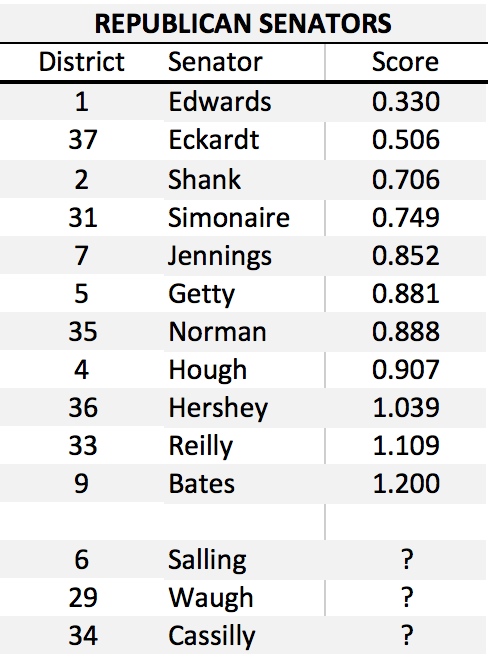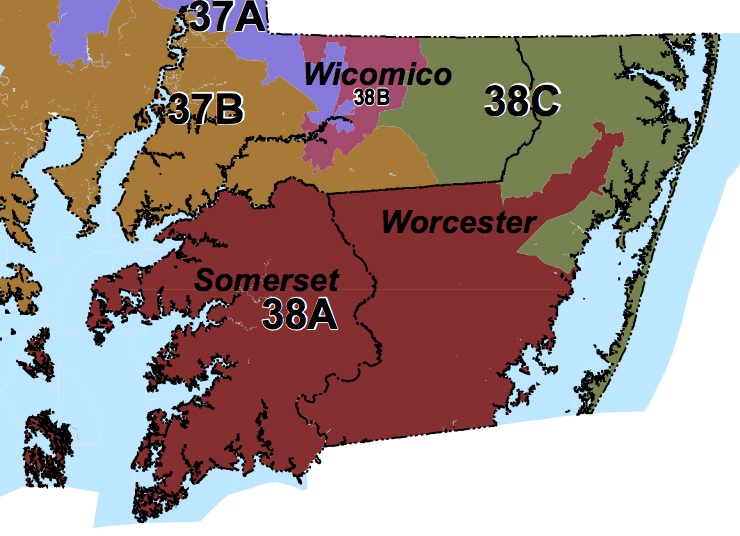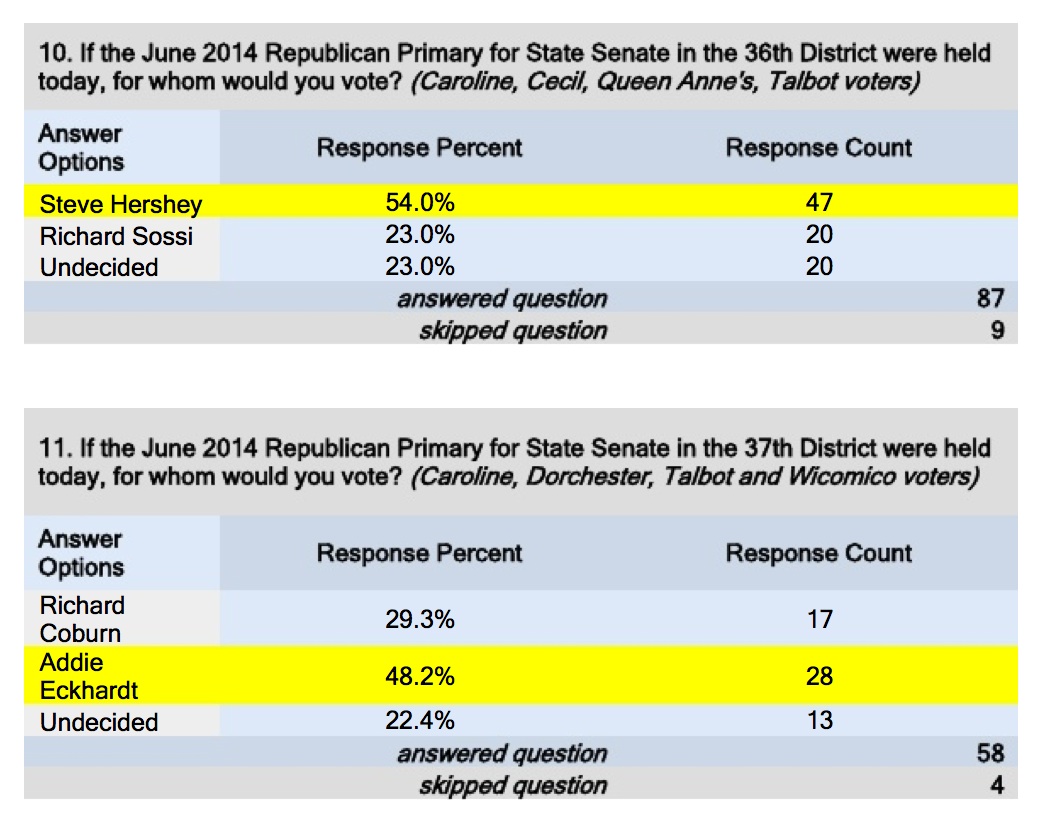 Eastern Shore District 37
Eastern Shore District 37
This is the third in a series on the top Senate primaries in the State (Part I and Part II).
District 37 (R): This primary matchup between Sen. Richard Colburn and Del. Adelaide (Addie) Eckardt is almost as personal as the one previewed yesterday in neighboring District 36. Colburn and Eckardt have served together in the General Assembly since 1995. According to The Quinton Report, Colburn walked up to Eckardt and on the night she filed and said “You used to be my friend.”
Colburn was elected in 1982 to the first of two terms in the House of Delegates. In 1990, he sought the Republican congressional nomination and came in third with 12% of the vote in a highly fractured contest. When very conservative Democratic Sen. Frederick Malkus, Jr., retired, Colbun won election to the Senate in 1994, easily winning the primary and then the general by 10%.
Eckardt is the most serious challenger Colburn has faced since gaining his Senate seat. Beyond being smart and likeable, she has also represented most of the same people as Colburn for nearly two decades. They are both known quantities.
Colburn also goes into the primary with less money than Eckardt as he has $32K in his campaign account to her $44K. Neither can raise money during the session, so they will have little time to raise much more before the primary occurs in June.
One advantage held by Colburn is that he already represents all of District 37. Eckardt represents District 37B, which elects two of the three delegates. Much of the advantage, however, is illusory. District 37A was drawn as a majority-black district, and so has comparatively few Republicans. In 2012, only 18.5% of registered Republicans lived in 37A–only around one-half what one would expect if Republicans were evenly distributed.
Moreover, Eckardt has decided to strike when Colburn is at his weakest. He has been under scrutiny for ethics questions, having spent “more than $40,000 in meals, gas, lodging, flowers and Baltimore Orioles tickets” out of his campaign funds, as reported in the Daily Times. The article has led to editorials calling for Colburn to “clean up his finances.”
On top of that, Colburn has had a very public divorce with allegations of an affair with his aide. His now ex-wife was even thinking of running against him but agreed to support him politically once they agreed to a divorce settlement.
Eckardt also appears more respected in the General Assembly than Colburn. While the number of Republican senators remains few, Colburn has somehow never managed to hold a Republican leadership position according to his bio. Eckardt chaired the House Republican Caucus for five years. However, it’s well known that a lack of respect in the Assembly often has little relation to political support at home.
In her remarks to the press, Eckardt expressed an interest in policy, even speaking about making health care reform work, rather than the usual staple of Republican talking points:
“Even though there’s been a lot of difficulty with the exchange, this is one of the most exciting times to be here in Annapolis because we’ve had 140,000 new people get on the Medicaid medical assistance who didn’t have heath care before, and that’s really important,” Eckardt said. “But we have to make sure it’s cost-effective and we have to make sure that, as we go forward, it’s a functioning system, because otherwise we would just be putting more money in technology and not getting the results. I’d rather see money go to care for individuals.”
Yet, she remains a firm conservative, especially on social questions. Colburn tends to position himself more as a regional champion, playing on the Shore as a victim of the State.
Needless to say, this will be an exciting contest. They’re both from Dorchester so neither has a home bailiwick. If anyone can topple Colburn, it should be Eckardt. Both seats in 37B will be open, so this race will likely feature high turnout amid an unusual level of interest in state legislative contests. Rating: Toss Up.
UPDATE: A friend on the Eastern Shore says that Colburn provides very good constituent services and has a reputation of being very responsive to individual requests, which will aid him in his hour of need in this tough primary.






